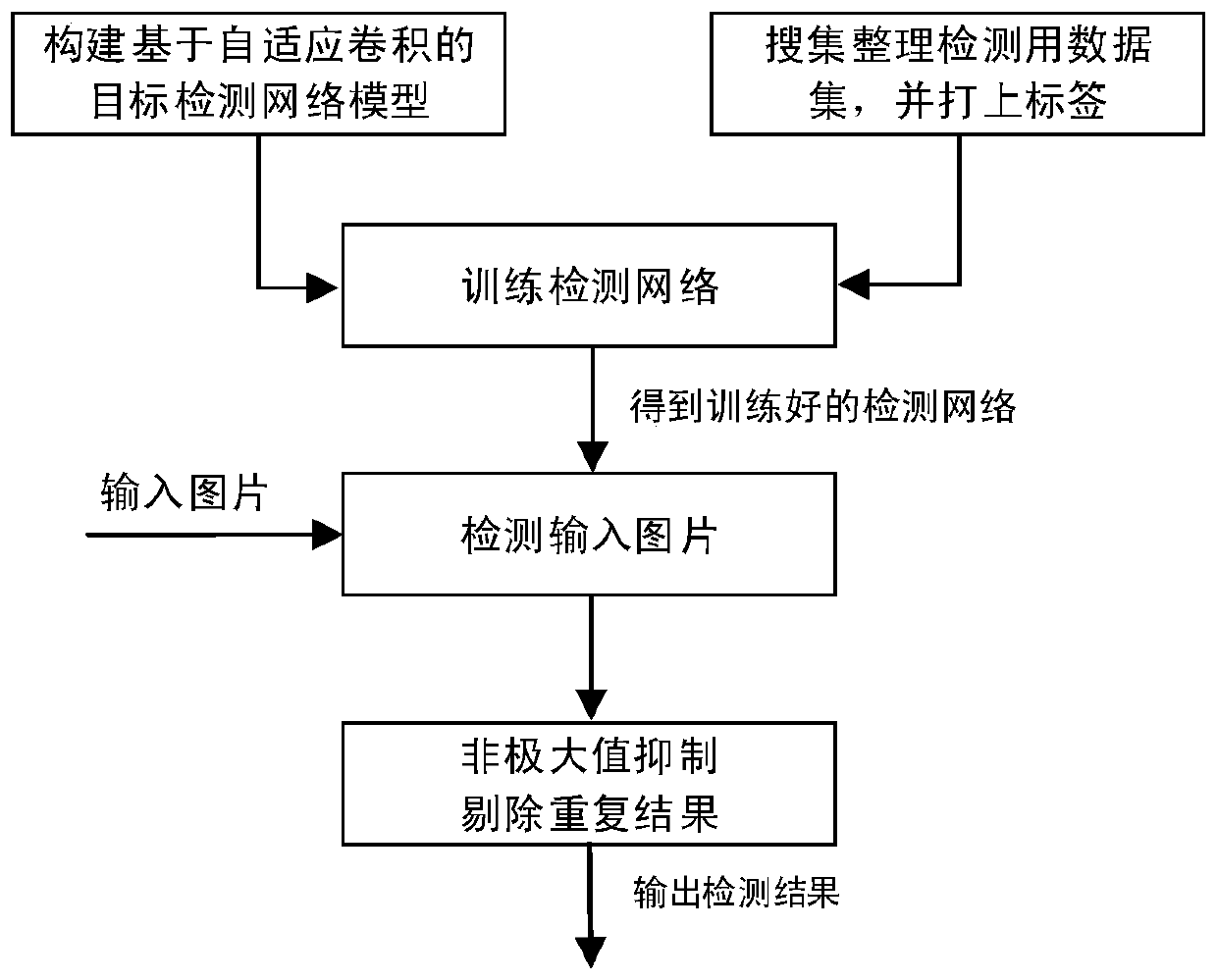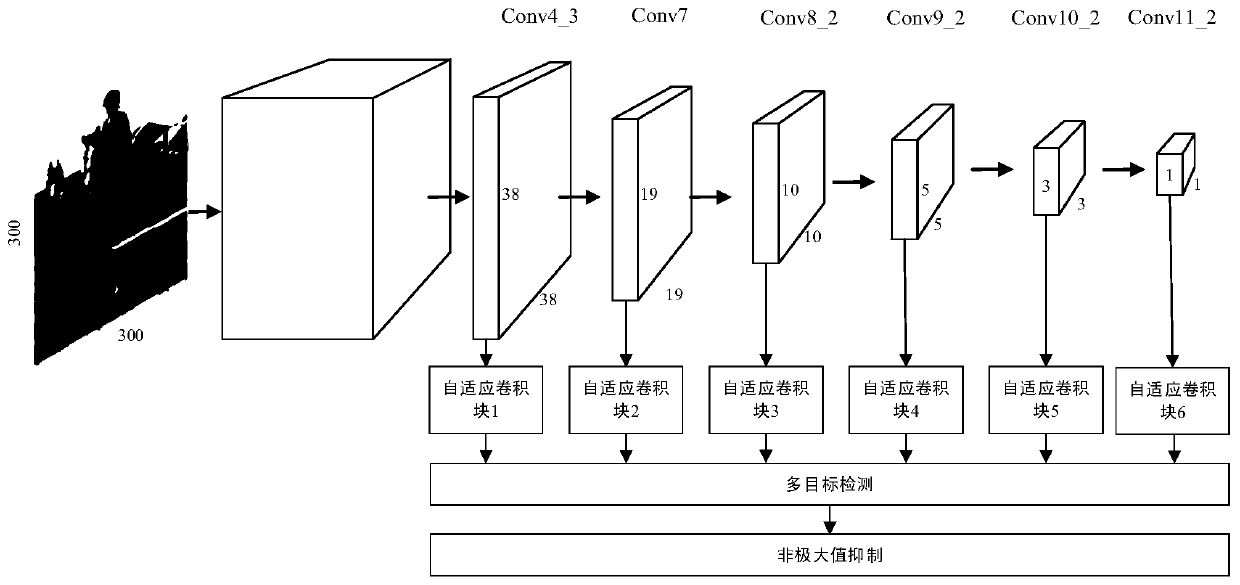Rapid target detection method based on self-adaptive convolution
A target detection and self-adaptive technology, applied in neural learning methods, instruments, biological neural network models, etc., can solve problems such as limited receptive field of shallow network, influence of small-scale target positioning, poor small-scale detection performance, etc., to achieve faster Overall run speed, reduction of duplicate results, enhanced information effectiveness
- Summary
- Abstract
- Description
- Claims
- Application Information
AI Technical Summary
Problems solved by technology
Method used
Image
Examples
Embodiment Construction
[0044] The present invention will be described in detail below in conjunction with the accompanying drawings and embodiments.
[0045] Such as figure 1 Shown, the concrete steps of the present invention are as follows:
[0046] 1. Build a training set
[0047] According to the needs of the actual target detection application scenario, sufficient training pictures are collected, and each picture is marked with a corresponding label, that is, the position and category of the target of interest are marked. Then statistically analyze the size of the targets of different scales in the training set, and determine the size of the prior anchor frame of the detection network according to the scale range of the target. If there are more small-scale objects and fewer large-scale objects in the required scene, the size of the prior anchor box is usually selected with a smaller value, otherwise, a larger anchor box is selected. Generally, according to experience, the a priori frame siz...
PUM
 Login to View More
Login to View More Abstract
Description
Claims
Application Information
 Login to View More
Login to View More - R&D
- Intellectual Property
- Life Sciences
- Materials
- Tech Scout
- Unparalleled Data Quality
- Higher Quality Content
- 60% Fewer Hallucinations
Browse by: Latest US Patents, China's latest patents, Technical Efficacy Thesaurus, Application Domain, Technology Topic, Popular Technical Reports.
© 2025 PatSnap. All rights reserved.Legal|Privacy policy|Modern Slavery Act Transparency Statement|Sitemap|About US| Contact US: help@patsnap.com



